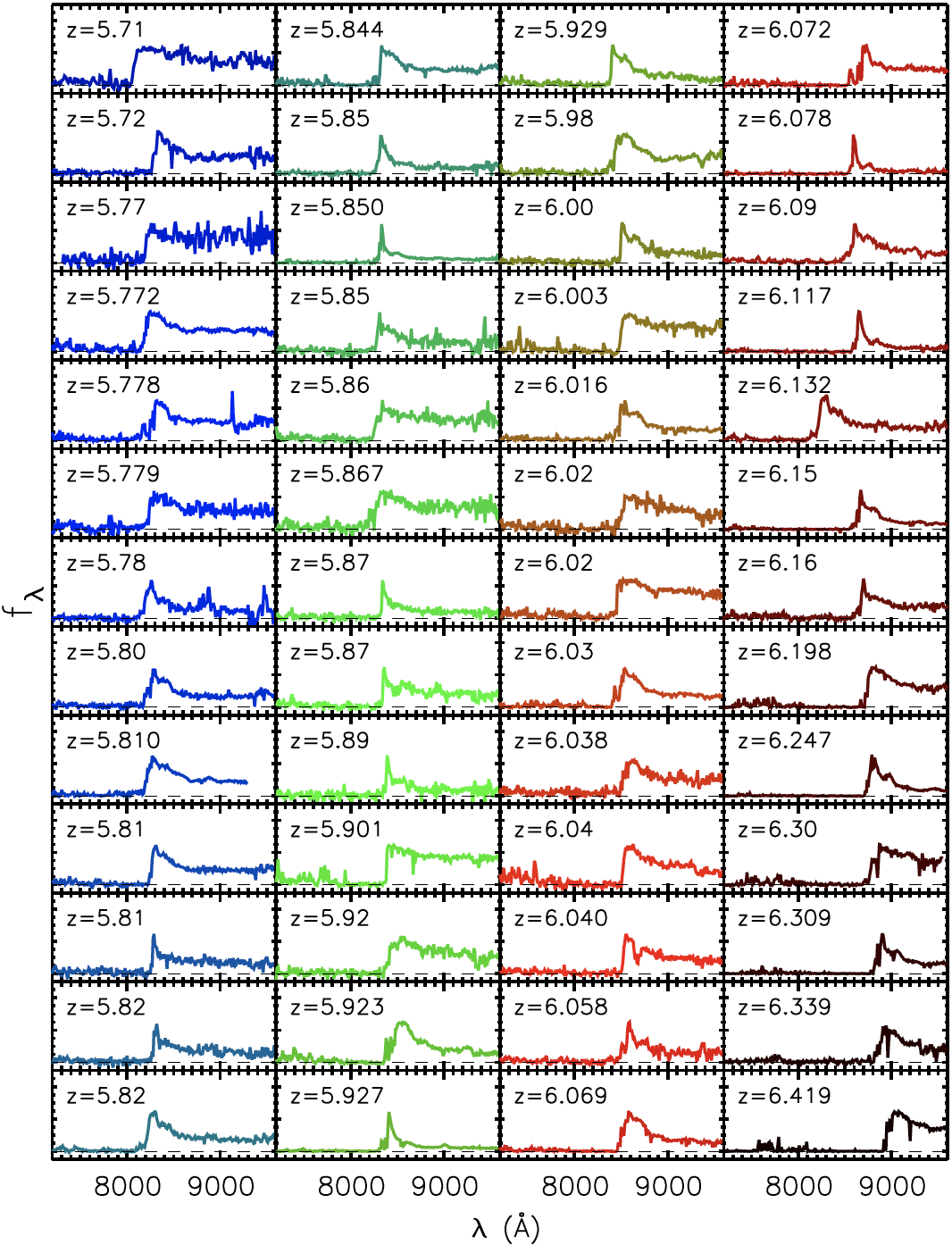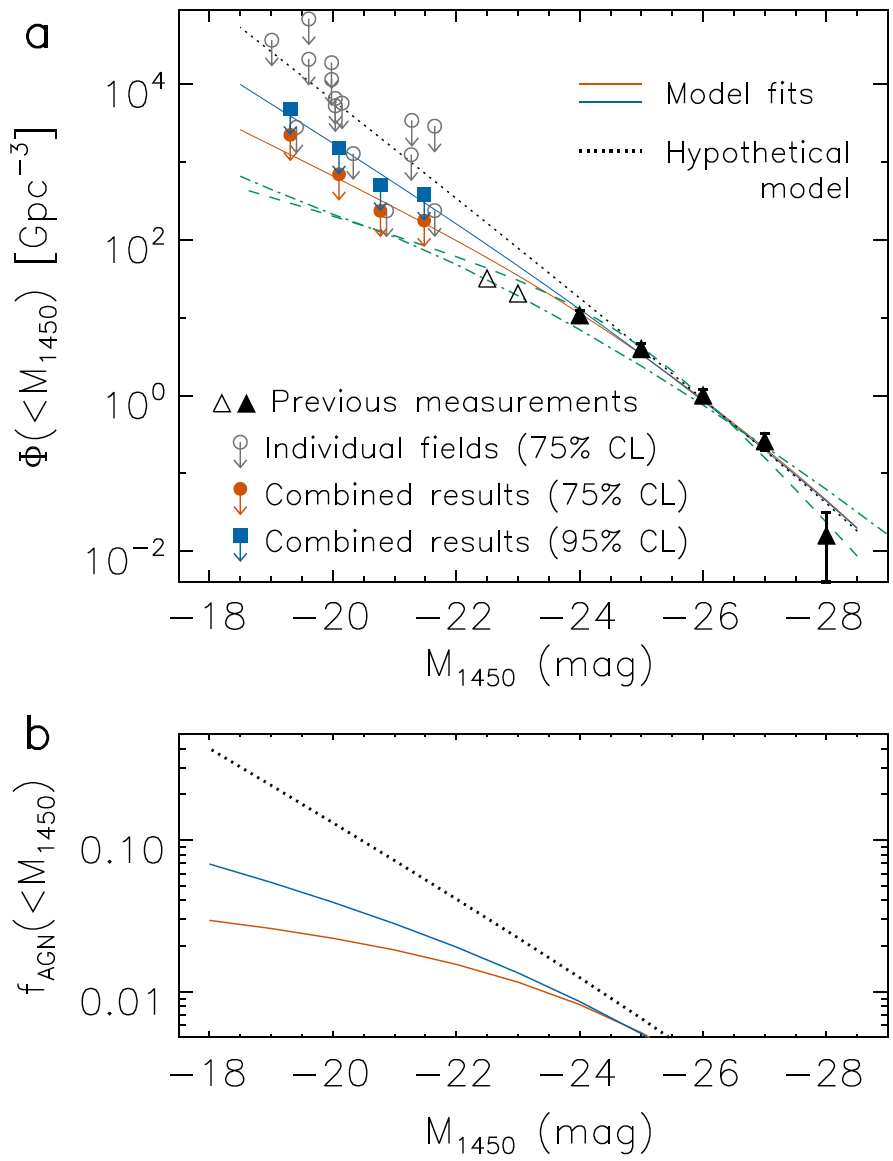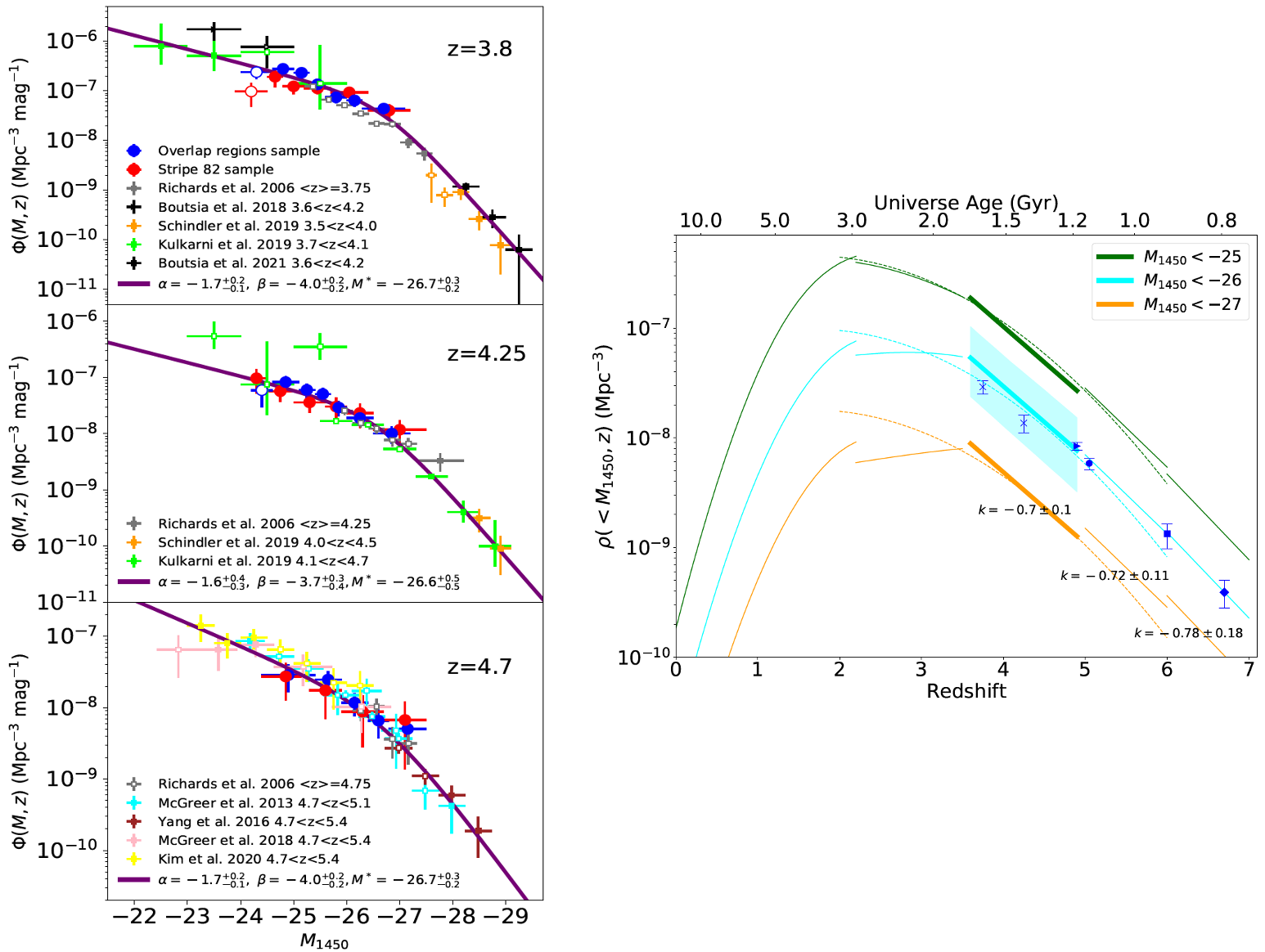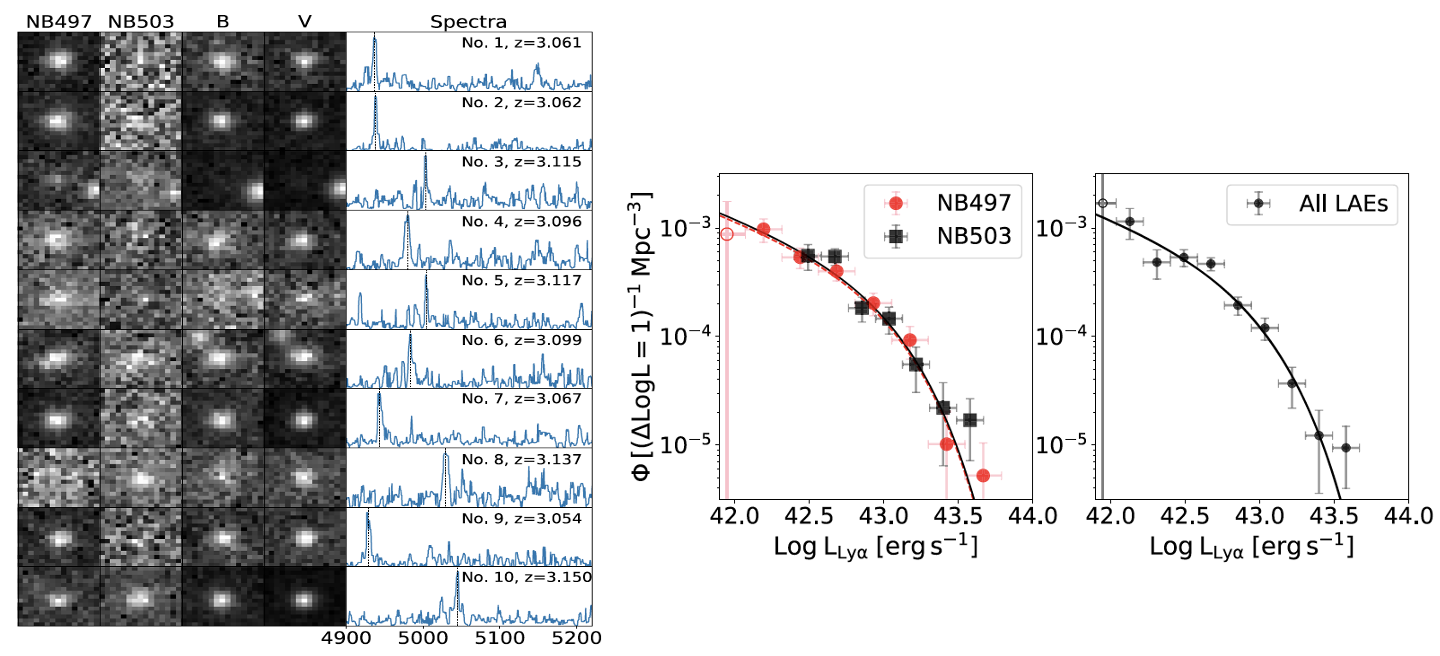Research Home
I have a range of research interests in extragalactic astronomy and observational cosmology, including high-redshift quasars and supermassive black holes, high-redshift galaxies and galaxy (proto)clusters, cosmic reionization, etc. The epoch of cosmic reionization marks the latest major phase transition of the universe. During this epoch the intergalactic medium was ionized by early astrophysical objects. Reionization started at redshift higher than ten and ended at redshift about six. This period is the time when the first galaxies started to form and shine, and the time when the first massive black holes started to accrete and grow. My research mainly focuses on astrophysical objects at the epoch of reionization.
I use large ground-based telescopes to carry out surveys of high-redshift quasars at redshifts close to or greater than six, selected from massive imaging data such as the Sloan Digital Sky Survey (SDSS). I carry out multi-wavelength observations using ground-based and space telescopes to study the physical properties of high-redshift quasars, their host galaxies, their central massive black holes, and their cosmic environments. I also use the observations of these quasars to probe cosmic reionization.
I use large ground-based telescopes to carry out spectroscopic surveys of high-redshift galaxies at redshifts around six or higher. I conduct multi-wavelength observations to study the physical properties of high-redshift galaxies, with ground-based and space telescopes such as Hubble Space Telescope (HST) and Spitzer Space Telescope. I use statistical properties of high-redshift galaxies to probe cosmic reionization.
My research interests also include relatively lower redshift (still billions of light-years away) quasars/AGN and galaxies. I carry out spectroscopic surveys of low-redshift quasars and galaxies, understand their formation and evolution, and study their physical properties. In addition, I am also interested in other research fields. Details are coming soon.
Finally, I am involved in several large projects, including CSST, DESI, Subaru PFS, and so on. For details, see the 'Projects' link.









